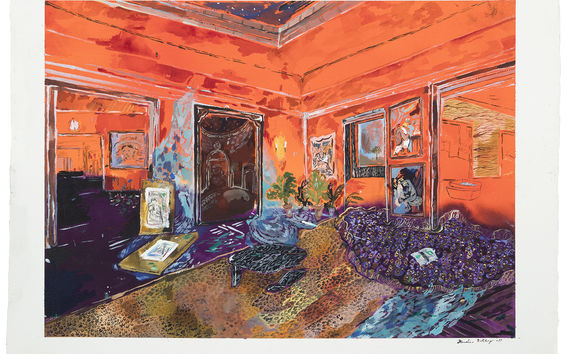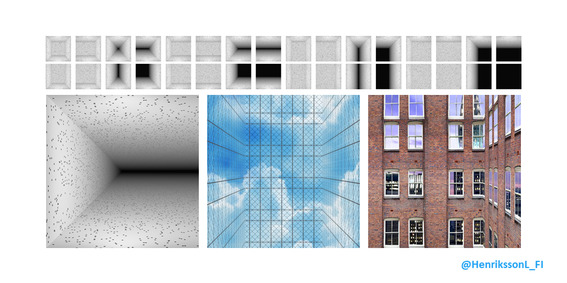Room for Thought: Brain Region That Watches for Walls Identified

To move through the world, you need a sense of your surroundings, especially things that might get in your way: the walls, ceiling and other barriers that define the geometry of the space around you. An international team of neuroscientists has identified an area of the brain dedicated to perceiving this geometry. This brain region encodes the spatial constraints of a scene at lightning-fast speeds, and likely contributes to our instant sense of our surroundings; orienting us in space, so we can avoid bumping into things and navigate safely through our environment.

“The speed with which our brains sense the basic geometry of our surroundings is an indication of the importance of having this information quickly,” said Dr. Linda Henriksson a lecturer in neuroscience at Aalto. “It is key to knowing whether you’re inside or outside, or what might be your options for navigation.”
“Vision gives us an almost instant sense where we are in space, and in particular of the geometry of the surfaces — the ground, the walls — which constrain our movement. It feels effortless, but it requires the coordinated activity of multiple brain regions,” said Nikolaus Kriegeskorte, PhD, a principal investigator at Columbia’s Zuckerman Institute and the paper’s senior author.
To figure out how the brain perceives the geometry of its surroundings, the research team asked volunteers to look at images of different three-dimensional scenes. An image might depict a typical room, with three walls, a ceiling and a floor. The researchers then systematically changed the scene: by removing the wall, for instance, or the ceiling. Simultaneously, they monitored participants’ brain activity through a combination of two cutting-edge brain-imaging technologies at Aalto’s neuroimaging facilities.
The study focused on a region of the brain called the occipital place area (OPA). “Previous studies had shown that OPA neurons encode scenes, rather than isolated objects,” said Dr. Kriegeskorte, “But we did not yet understand what aspect of the scenes this region’s millions of neurons encoded.”
After analyzing the participants’ brain scans, Drs. Kriegeskorte and Henriksson found that the OPA activity reflected the geometry of the scenes. The OPA activity patterns reflected the presence or absence of each scene component — the walls, the floor and the ceiling — conveying a detailed picture of the overall geometry of the scene. However, the OPA activity patterns did not depend on the components’ appearance; the textures of the walls, floor and ceiling — suggesting that the region ignores surface appearance, so as to focus solely on surface geometry. The brain region appeared to perform all the necessary computations needed to get a sense of a room’s layout extremely fast: in just 100 milliseconds.
Moving forward, the research team plans to incorporate virtual reality technology to create more realistic 3D environments for participants to experience. They also plan to build neural network models that mimic the brain’s ability to perceive the environment.
“We would like to put these things together and build computer vision systems that are more like our own brains, systems that have specialized machinery like what we observe here in the human brain for rapidly sensing the geometry of the environment,” said Dr. Kriegeskorte.
The full paper is titled “Rapid invariant encoding of scene layout in human OPA.”
This research was supported by the Academy of Finland (Postdoctoral Research Grant; 278957), the British Academy (Postdoctoral Fellowship; PS140117) and the European Research Council (ERC-2010-StG 261352).
Read more news

DeployAI Partners Gather for Heart Beat Meeting in Helsinki
The European DeployAI project's partners gathered for the Heart Beat meeting hosted by Aalto University Executive Education in Helsinki.
Aalto computer scientists in ICML 2024
Computer scientists in ICML 2024
In low-hierarchy organisations, even key policy issues are discussed in Slack
In a recent study, Aalto University alumn Lauri Pietinalho, a visiting scholar at New York University's Stern School of Business, and Frank Martela, an assistant professor at Aalto University, investigated how low-hierarchy organisations deal with shared policies in confrontational situations and how authority functions within them.